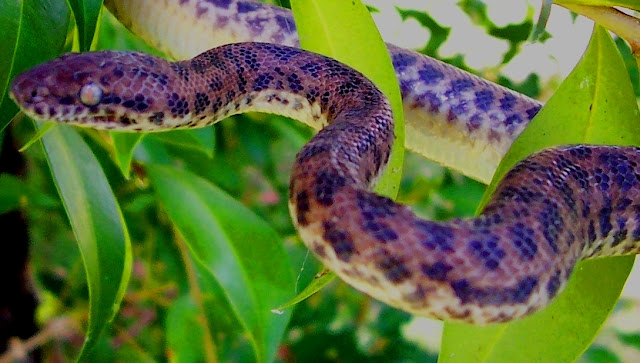Of all the reptiles, we are usually most interested in the largest ones - alligators, crocodiles, komodo dragons, and the big snakes. These snakes have songs written about them, and the anaconda was even the star of a movie! Not only are these reptiles amazing due to their size, they also have many other interesting points.
 |
| Royal Python or Ball python, Python regius (Photo credit: Wikipedia) |
Let's begin with the standard question, exactly how big are they? The largest of the big snakes is the anaconda, which has been reported to grow to thirty-seven feet long. You can't realize how long a reptile this is until you measure from your room down the hallway, probably well into the living room. A truly enormous snake, and one of the longest reptiles ever! This snake spends most of its time in the water hiding in the water plants of South America.
The other four giant snakes are pythons, and are found in Africa and Asia. They grow to between 22 feet and 32 feet, depending on the species. If you see a python in a zoo or other animal show, it is probably a reticulated python from Southeast Asia, due to its beautiful color pattern and the fact that it does well living in captivity. How do regular snakes compare with these giants? Most other snakes are much smaller, and even few rarely even grow to twelve feet.
The giant snakes can live up to twenty years in captivity. When they are young they can be eaten by hawks or other predators that eat smaller snakes, but no animal would try to threaten or eat a full grown giant snake. The only real enemies of these great reptiles are intestinal parasites, diseases, and man.
The giant snakes really can swallow a man whole! Very few cases of that have been reported though. Once a giant snake has had a large supper, it would be the same as if it ate four hundred average sized meals. This means that sometimes these reptiles might go a long time between meals, maybe as infrequently as once a year.
The giant snakes have extremely strong muscles, and use them both in movement and in hunting their prey. Their jaws are also very strong, but that isn't as important as how wide their mouths open in order to eat their prey. Generally the giant snakes kill their prey before the snake begins to swallow them. The giant snakes rely on squeezing their prey (which is why they are often called constrictors), but they generally squeeze only hard enough to prevent the prey from breathing sufficiently, and eventually suffocate the prey. They do not need or intend to squeeze hard enough to crush or break bones, as people sometimes think.
Many snake handlers consider the giant snakes to be quite intelligent, and find that the giant snakes are easily handled and come to recognize and accept their trainers. They are among the most fascinating of reptiles, and make sure you visit them if they are in a nearby zoo or other naturalist area.







